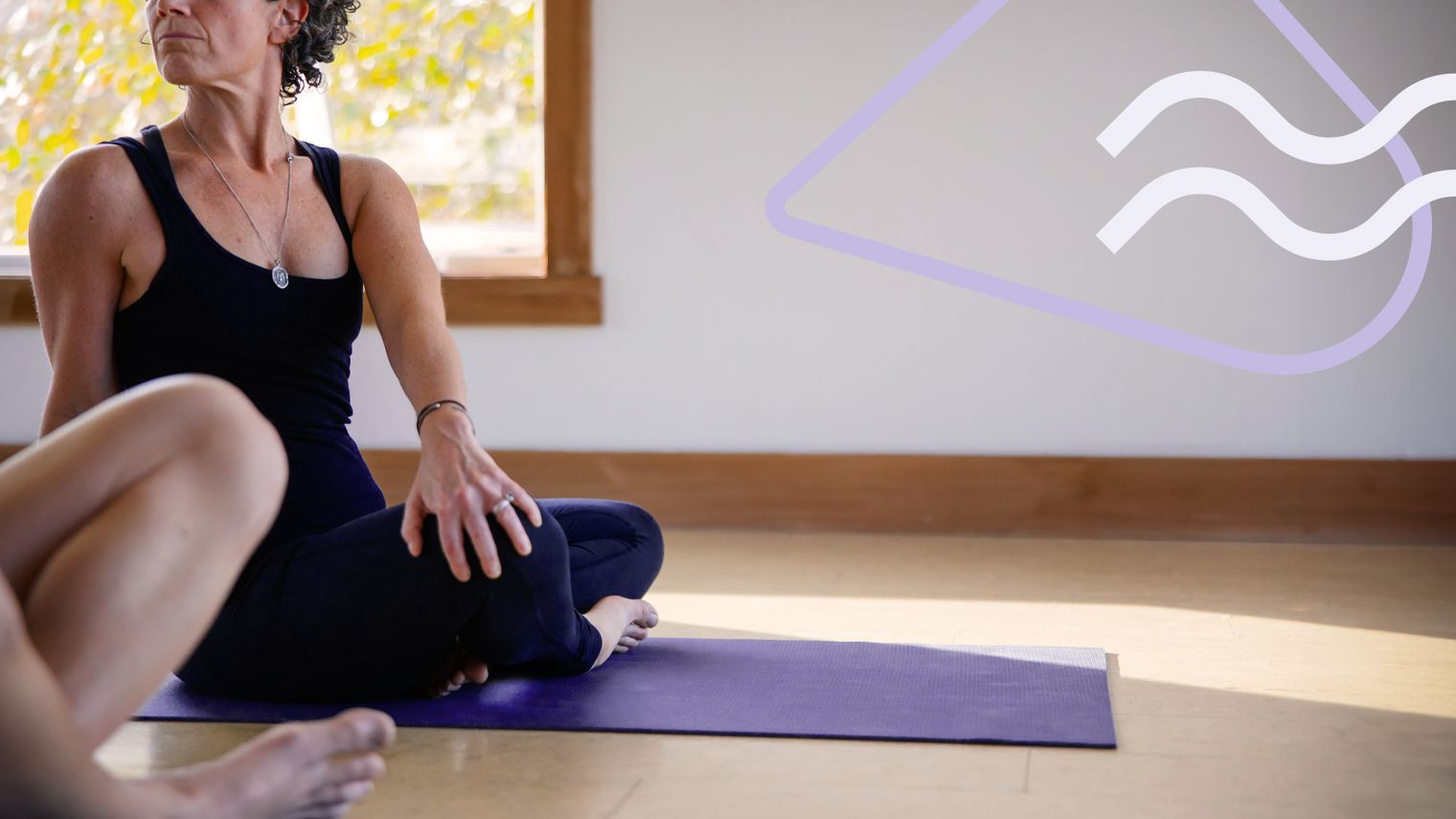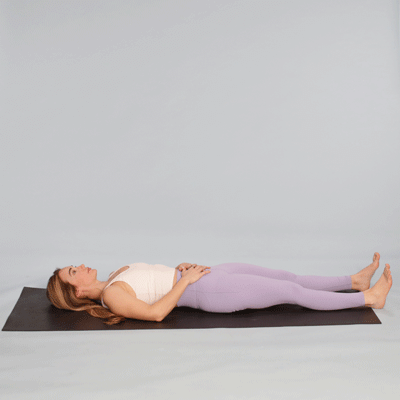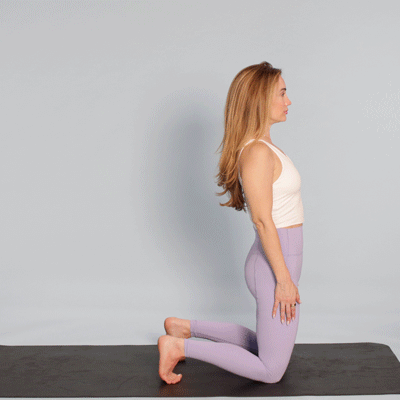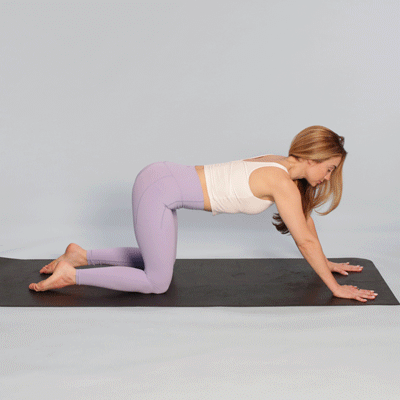Yoga for Bloating with IBD
July 26, 2024
Content created for the Bezzy community and sponsored by our partners. Learn More

Photography by Rob and Julia Campbell/Stocksy United
Some yoga poses help compress and stimulate the digestive organs, making yoga an effective tool to help relieve bloating that can occur with inflammatory bowel disease.
If you have inflammatory bowel disease (IBD), you may have tried numerous strategies to relieve bloating. If they haven’t been as successful as you’d like, it may be time to give yoga a try.
While yoga is surging in popularity in the United States today, it’s by no means a new practice; it’s been used in India for thousands of years to improve physical and mental well-being.
While many people love it for its fitness and mindfulness benefits, yoga may also be an effective, gentle way to alleviate bloating and cramping and promote general digestive health.
So, if you’re ready to get down with Downward Dog and other poses, read on to learn more about how yoga can help reduce IBD bloating and improve your well-being.


Yoga and digestive health
A recent literature review suggested that mind-body interventions can reduce symptoms in many chronic illnesses and that yoga might be particularly helpful for folks living with IBD.
A handful of small studies included in the review showed that it may decrease clinical activity and reduce stress.
The authors of the review suggest several possible reasons for this: Some of the included studies found changes in brain volume and density among yoga practitioners (which correlate with reduced levels of perceived stress), and increases in certain neurotransmitters, which in turn can benefit IBD. Some also found lower levels of inflammatory markers.
Longtime yogis also find that getting on the mat helps reduce bloating and other IBD symptoms. Here’s how:
Yoga stimulates digestion
Almost any physical activity, including walking, can help relieve bloating and improve digestion. However, yoga, in particular, involves twists and forward bends, which can stimulate the digestive organs and help food move through your system more easily.
Yoga reduces stress
Yoga isn’t just about twisting yourself into a pretzel; it’s also about finding a little calm. Stress can exacerbate IBD symptoms, but a mindful, relaxing activity like yoga can reduce stress and indirectly benefit your digestive health.
Yoga has minimal side effects
Unlike some medications, yoga has virtually no side effects.
The worst that could happen is that you could injure a muscle, but in a 2021 study, only 0.25% of participants experienced that, another 1% experienced soreness, and a miniscule 0.13% reported fatigue.
Yoga can flatten your stomach
Incorporating yoga poses that target the digestive organs into your next yoga practice can help flatten a bloated stomach.
Regular use of poses like Cat-Cow and Forward Fold can make a significant difference to your digestive comfort. In addition, yoga strengthens your core, which will also help create a flatter appearance.
Specific yoga poses to relieve IBD-related bloating
While any yoga practice is beneficial for overall health, learning specific poses will be particularly helpful if you want to use yoga for bloating and other IBD symptoms. The following are great poses to start with.
Half Gas-Release Pose (Ardha Pawamuktasana)

According to Yoga Journal, this pose compresses the colon to aid in releasing gas.
How to do it:
- Lie on your back with your legs extended straight in front of you.
- Raise one leg straight up in the air and bend your knee at a 90° angle.
- Reach for your foot (if you’re flexible enough!) or your calf with both hands and hug that leg to your body.
- Continue pressing your left leg into the ground.
- Hold for a minute or 2 and release your leg to the ground.
- Repeat with your other leg.
Bharadvaja’s Twist (Bharadvajasna)

Gentle twists are particularly great for massaging the abdominal organs. This is an easy seated twist.
How to do it:
- Sit cross-legged on a mat.
- Reach across your body to grab your right knee with your left hand.
- Reach your right arm behind your body, placing your palm on the floor behind you, or as far across your back as you can.
- Twist your midsection and your head to the right. Stop when you feel a light stretch.
- Breathe deeply and hold.
- Repeat, twisting in the other direction, with your right hand on left knee and left hand on the floor behind you.
Camel Pose (Ustrasana)

Bending backward can help stretch your abdomen and chest to relieve bloating. While even beginners can do this pose, it can be challenging, so don’t hesitate to make modifications if necessary.
How to do it:
- Kneel on your mat, with your legs parallel and about hip-width apart. If your knees are sensitive, place a folded blanket or towel under them. Keep your hips and torso directly above your knees.
- Drop your tailbone toward the ground to lengthen your spine. Tone your abdomen.
- Slowly reach behind you with both hands, stretching your abdomen and grasping your heels, if you can. If you’re not able to reach that far, simply place your hands on your lower back with your fingers pointing down and your elbows tucked in close to your body.
- Drop your shoulders and broaden your chest.
- Inhale and keep lifting your chest, allowing your back to arch slightly.
- Stretch your head back to look at the ceiling; hold the pose for several breaths before gently returning to an upright position.
Extended Puppy Pose (Uttana Shishosana)

This yoga pose is great for IBD: It stretches the abdomen and relieves cramps, according to Yoga Journal.
How to do it:
- Kneel on the mat with your hands beneath your shoulders in a tabletop position.
- Keeping your hips in place, extend your arms forward and lower your torso and forehead to the mat.
- Move your shoulder blades away from each other and breathe.
The takeaway
Yoga has benefits for almost everybody, but for people living with IBD, it’s particularly helpful.
Yoga can help reduce bloating and increase digestive comfort, thanks to the stimulation of compression, twisting, and bending poses. If you need to release trapped gas or relieve your bloated stomach, try yoga for bloating before you reach for an antacid.
Medically reviewed on July 26, 2024
7 Sources


Like the story? React, bookmark, or share below:
Have thoughts or suggestions about this article? Email us at article-feedback@bezzy.com.
About the author